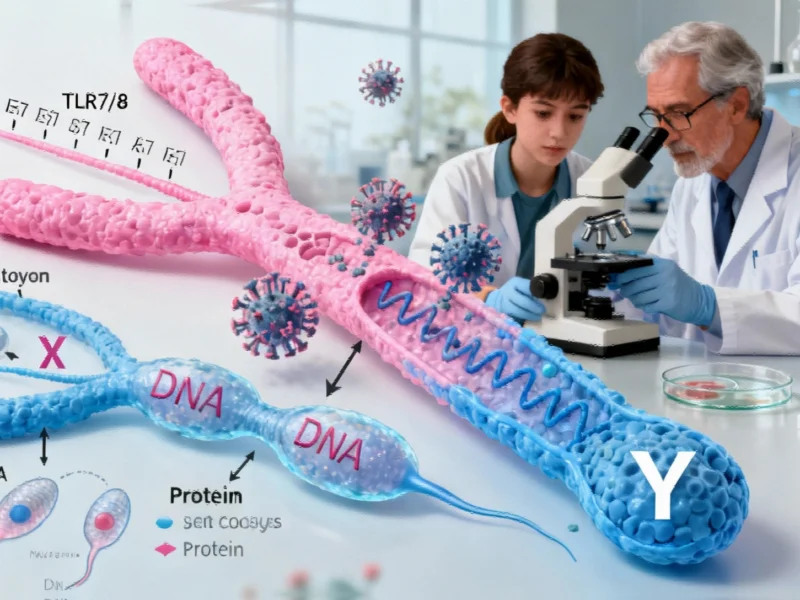New Study Challenges Previous Sex Selection Breakthrough
Researchers have disproven a sex selection method that initially showed promise for revolutionizing animal breeding and potentially human fertility treatments, according to a new study published in iScience. The original 2019 research suggested that targeting specific genes on the X chromosome could enable efficient separation of sperm carrying female-determining chromosomes from those carrying male-determining chromosomes.
Scientific Investigation Reveals Fundamental Flaw
Ruifeng (Ray) Zhao, Ph.D. student, and Xiuchun (Cindy) Tian, professor of animal science at the University of Connecticut, conducted follow-up research that revealed significant problems with the original methodology, sources indicate. “We realized this doesn’t make any sense,” Zhao stated in the report, noting that if only X-sperm contained the targeted genes, viral infections could cause severe sex ratio imbalances in populations.
Biological Mechanism Maintains Natural Balance
The researchers discovered that Toll-like receptors 7 and 8 (TLR7/8), the genes central to the original method, are actually present in equal proportions in both X and Y sperm. According to their analysis, this occurs because during spermatogenesis, X and Y sperm remain connected and share proteins and mRNA before separating into individual cells with different DNA.
“The reason why the sperm are linked until they’re released is because nature, evolution wanted to conceal the difference between X and Y sperm,” Tian explained in the published findings. “That way you ensure there is a balance of sex ratios in future generations. Just a 1 to 2% imbalance in sex ratios can be devastating to a species.”
Methodology Testing Across Multiple Species
The research team tested the original claims using mouse, cattle, and human sperm samples, with results consistently showing equal distribution of TLR7/8 across both sperm types. “In scientific discovery, there can be mistakes made,” Tian noted. “We believe this is one of those. We saw something that we thought was not right, so we needed to produce the data to demonstrate that this is inconsistent with what we know about sperm biology.”
Current Sex Selection Limitations
The existing standard for sperm sorting, developed by the USDA in the 1980s, reportedly remains highly inefficient despite decades of use. This method relies on DNA content differences between X and Y sperm, but analysts suggest it requires discarding approximately 90% of sperm samples because most X and Y sperm have indistinguishable DNA content. The specialized equipment needed for this process is also extremely expensive and limited to specialized facilities.
Agricultural and Research Implications
The ability to reliably select for sex carries significant importance for multiple industries, according to reports. Dairy farmers typically require female cattle for milk production, while beef producers often prefer males for meat production due to their greater muscle growth. In scientific research, controlled sex selection enables more precise studies of how females and males respond differently in experimental trials.
Future Research Directions
Despite this setback, researchers indicate the pursuit of effective sex selection methods continues. “There are so many things that we still don’t understand,” Zhao stated. “There is more work to be done to understand those mechanisms, and probably, in the future, there will be a better solution.” The complete study findings are available in iScience journal.
Broader Scientific Context
This research contributes to growing understanding of the X chromosome and its role in biological development. The findings emerge alongside other significant scientific developments, including climate whiplash research, software vulnerability discoveries, climate tipping point analyses, and nanotechnology advances involving protein coatings and spontaneous chirality.
This article aggregates information from publicly available sources. All trademarks and copyrights belong to their respective owners.

